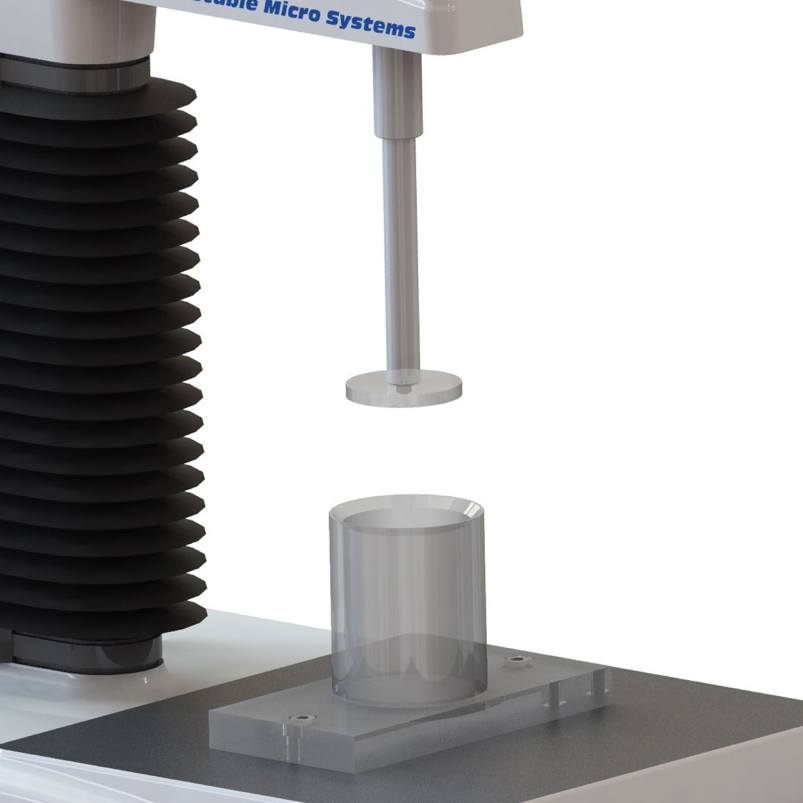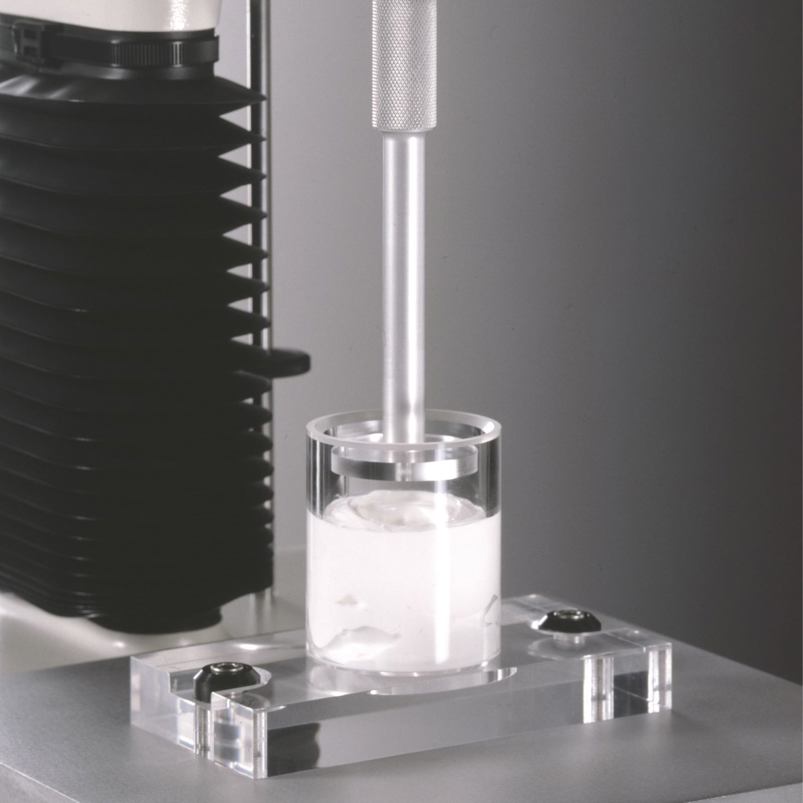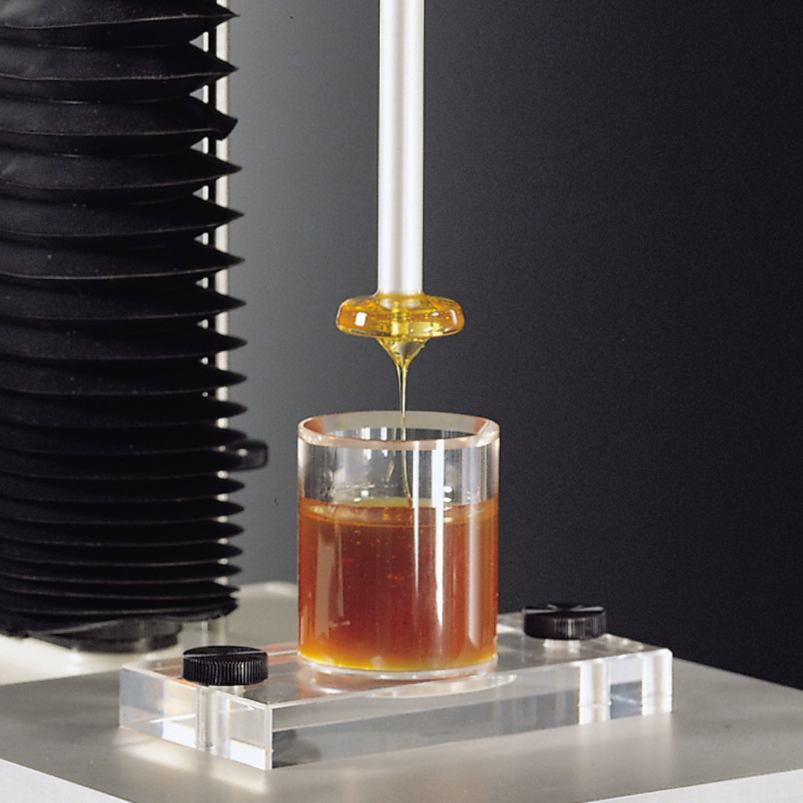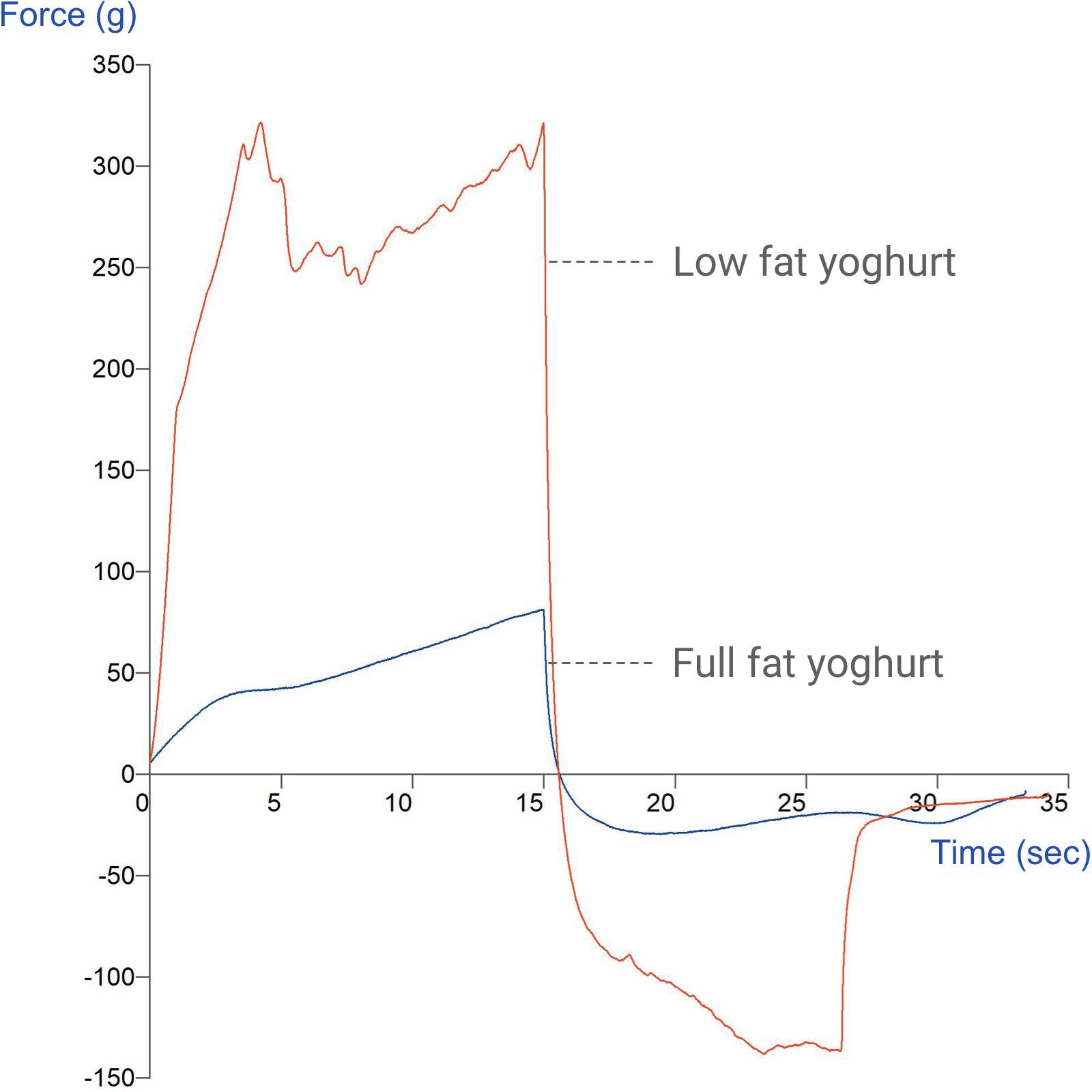Product overview
The measurement of semi-solid consistency is important across various industries, particularly in food, pharmaceuticals, cosmetics, and materials science. The semi-solid consistency of a substance refers to its viscosity, texture, and flow characteristics, which can have significant implications for product quality, performance, and consumer satisfaction. Here's why measuring consistency matters:
Product quality control: In industries like food and pharmaceuticals, consistent semi-solid consistency is essential to ensure that products meet established quality standards. Measuring consistency helps manufacturers maintain product uniformity and reliability.
Consumer acceptance: In the food and cosmetic industries, the texture and consistency of products significantly influence consumer acceptance. Measuring consistency ensures that products meet consumers' sensory expectations, leading to higher satisfaction and repeat purchases.
Dosage and application: In pharmaceuticals and personal care products, semi-solid consistency affects dosage accuracy and application effectiveness. Properly measured consistency ensures that the right amount of product is dispensed or applied, enhancing therapeutic or cosmetic results.
Manufacturability: In manufacturing processes, understanding and controlling semi-solid consistency are crucial for efficient production. Proper consistency ensures that substances can be processed, packaged, and distributed effectively without causing bottlenecks or defects.
Formulation optimisation: In research and development, measuring semi-solid consistency helps scientists and engineers optimise formulations. This is particularly important when developing new products or improving existing ones to achieve the desired properties.
Shelf life: The semi-solid consistency of products can change over time due to factors like temperature, humidity, and ingredient interactions. Regularly measuring consistency helps monitor product stability and predict changes that might affect shelf life.
Health and safety: In industries like pharmaceuticals, the consistency of medical ointments, creams, and gels can affect their efficacy and safety. Consistent viscosity ensures that these products are applied correctly and evenly.
Regulatory compliance: Industries such as pharmaceuticals and cosmetics are subject to strict regulatory guidelines. Consistency measurements are often required to ensure that products meet regulatory requirements for texture, application, and performance.
Customer expectations: For products that involve tactile or sensory experiences, such as lotions, creams, and spreads, measuring semi-solid consistency helps align the product with consumer expectations. A product that feels as expected is more likely to earn customer loyalty.
Efficient packaging: The consistency of a semi-solid substance can impact its behaviour during packaging. Measuring and controlling consistency ensures that substances can be efficiently packaged into containers without issues like clogging or uneven distribution.
Research and development: In material science and research, measuring semi-solid consistency helps scientists understand the behaviour of various substances under different conditions, leading to insights for product innovation and development.
Overall, the measurement of semi-solid consistency is crucial for maintaining product quality, meeting consumer preferences, optimising manufacturing processes, and adhering to regulatory standards. It enables industries to create products that perform as intended, offer a satisfying experience to users, and contribute to the overall success of businesses and products.
This rig consists of a sample container which is centrally located beneath a disc plunger. The disc plunger performs a compression test which extrudes the product up and around the edge of the disc. This test measures the consistency of viscous products, such as yoghurt, creams and sauces, processed fruit and vegetables, or moisturising creams, shampoo and hair gel products. Results relate to the viscosity of a sample i.e. a sample of higher viscosity requires higher force to extrude providing a measurement of higher consistency.
During a test when the trigger is attained (i.e. the point at which the disc's lower surface is in full contact with the product) the disc proceeds to penetrate to a chosen depth (which should not exceed 75% of the sample depth otherwise base effects will be measured). At this point (most likely to be the maximum force), the probe returns to its original position. The 'peak' or maximum force is taken as a measurement of firmness – the higher the value the firmer is the sample. The area of the curve up to this point is taken as a measurement of consistency - the higher the value the thicker the consistency of the sample. The negative region of the graph, produced on probe return, is as a result of the weight of sample which is lifted primarily on the upper surface of the disc on return, i.e. due to back extrusion, and hence gives again an indication of consistency/resistance to flow off the disc. The maximum negative force is taken as an indication of the cohesiveness of the sample – the more negative the value the more 'cohesive' is the sample. The area of the negative region of the curve may be referred to as the 'work of cohesion' – the higher the value the more resistant to withdrawal the sample is which is an indication of the cohesiveness and also consistency of the sample.
This test arrangement can also be used to measure the surface stickiness of a sample if this measurement is to be the focus of the test. In this case, an adhesive test is chosen to hold the disc on the surface of the sample before pulling away to measure its stickiness.
Three discs of different diameters are provided (35, 40 and 45mm). Usage of these depends on the type of product to be tested and whether it contains any particulates such as found in soups or jams.
How does the Back Extrusion Rig work?
Ideal sample form
Viscous liquid and semi-solid materials which need to be contained in order to measure their flow, consistency and adhesion properties.
The probe may go into the product to measure internal adhesion/cohesion or may be used to simply measure the force to withdraw from the surface (which can also be done effectively with a moderate sized cylinder probe).
Benefits and limitations
- Using the back extrusion principle (i.e. using a disc on the probe adapter) the consistency can also be determined directly in containers out of the running production. This rules out pre-stressing of the material caused by transfilling. This cannot usually be avoided when using the Forward Extrusion Rig.
- Viscous liquids containing particulates can also be tested by selection of a smaller extrusion disc (i.e. creating a larger annular gap). Products containing particulates cannot be tested using the Forward Extrusion Rig as erroneous data is produced when the particulates attempt to extrude through the annulus.
- When testing a product of thick consistency, a smaller diameter disc should be chosen to allow the product to freely flow between the disc and wall of the vessel to limit 'wall effects'. If a larger disc is chosen a larger force will be measured due to the restriction of flow of the product.
- The extrusion test should avoid going close to the base of the vessel otherwise base effects may be introduced (i.e. the proximity of the disc to the base of the vessel may affect the force measurement). As a guide, the test should not proceed beyond 75% of the vessel height (or should not be testing within 10mm of the vessel base).
Optional extras
Some samples resist withdrawal of the disc. It is recommended that the container is held to prevent it from lifting using a Universal Sample Clamp.
Back extrusion discs and adapter set – A/BE-DA
Pack of 3 x 35mm Ø discs – A/BE-D35
Pack of 3 x 40mm Ø discs – A/BE-D40
Pack of 3 x 45mm Ø discs – A/BE-D45
Back extrusion pot (1 only) – A/BE-PS
Technical information
Installation
Full installation instructions are provided within the Education Zone of the latest Exponent/Connect software version and on the technical information sheet accompanying this product.
Chemical compatibility
Stable Micro Systems probes and attachments are commonly made from four materials: anodised aluminium (AA6082 T6), stainless steel (316 T), Delrin (acetyl copolymer) and Perspex (polycarbonate).
In general use, probes and attachments made from these materials will be suitable for testing food products and inert non-food materials.
The four materials listed above are not universally resistant to all types of chemicals and as such the compatibility of the probe/attachment material with the product (to be tested) must be established to prevent damage to the probes and attachments. If the compatibility of the product with the probe is unknown to the customer then the chemical information about the product (Material Safety Data Sheet or Product Data Sheet) should be submitted to Stable Micro Systems. Stable Micro Systems will then assess the suitability of the probe/attachment material for use with the product and advise accordingly. If this advice is not sought then Stable Micro Systems will not accept liability for probes/attachments damaged by chemical attack from the product being tested.
Cleaning and maintenance
All probes and attachments may be cleaned in warm (or hand hot) water using a mild detergent. A soft brush may be used but abrasive cleaning aids should be avoided. Stable Micro Systems products should not be microwaved or cleaned in a dishwasher.
Screw threads should be lightly lubricated after drying using a light lubricant, e.g. petroleum jelly, mineral oil. This will aid the fitting and unscrewing of the item. Each component of a probe or attachment should be wrapped separately when stored, to avoid scratching or chipping. This will safeguard against any unnecessary damage to the accessory.
Troubleshooting
If the force increases towards the target distance you may be nearing the base of the vessel and measuring a ‘base effect’. As a general rule, your extrusion distance should not exceed 80% of the depth of the sample.
Likewise, a disc that is too large for the test vessel could create an artificially increased force due to ‘wall effects’.




